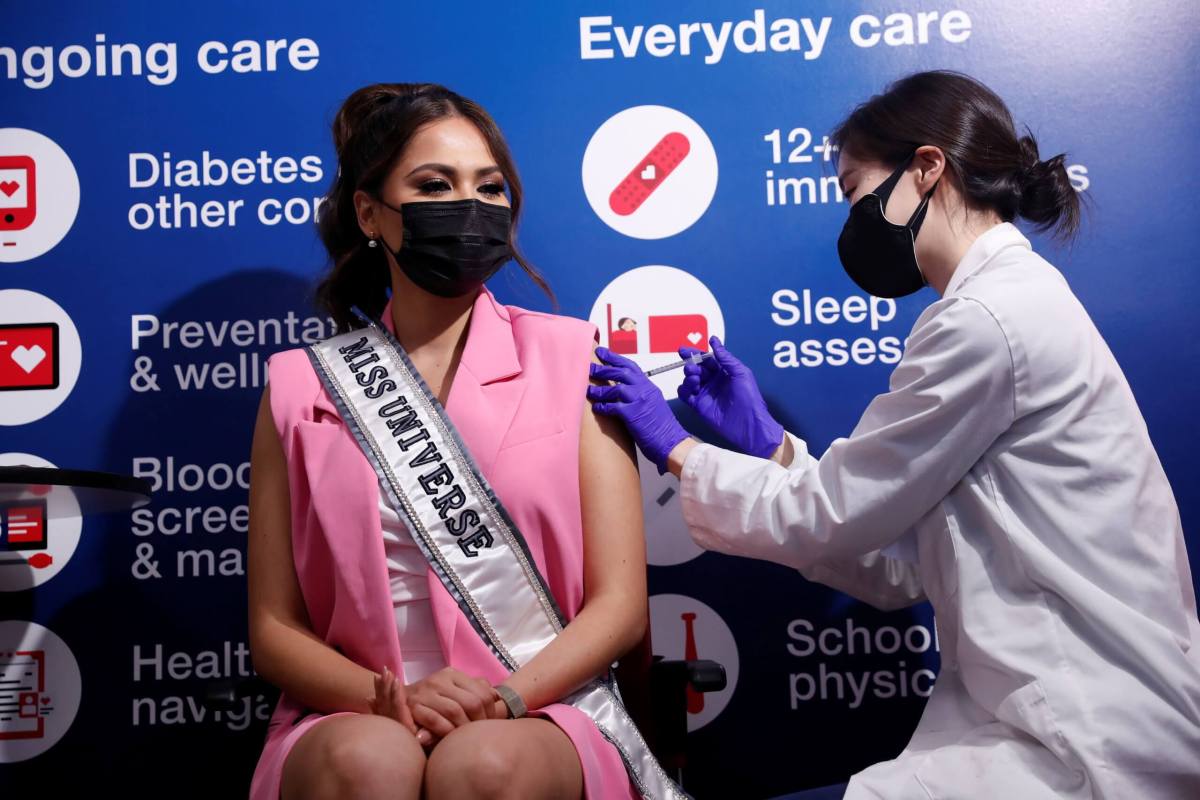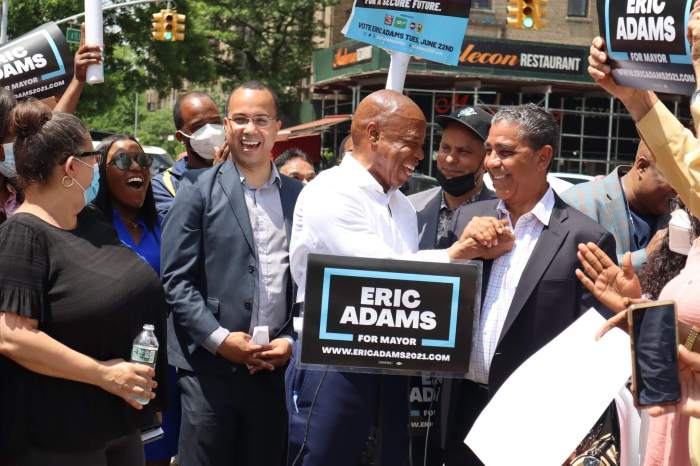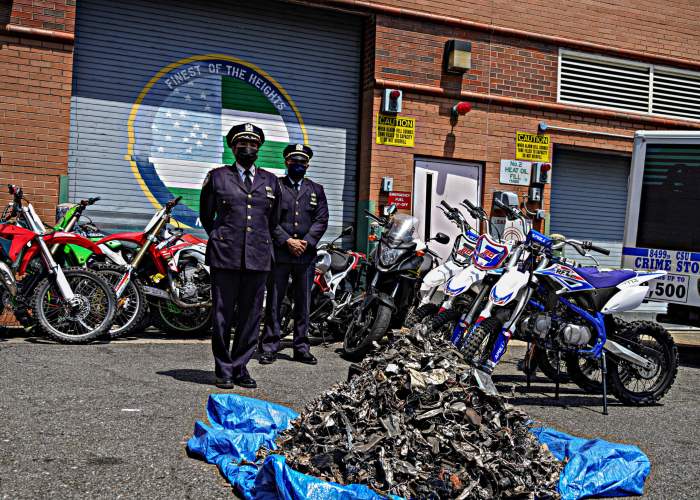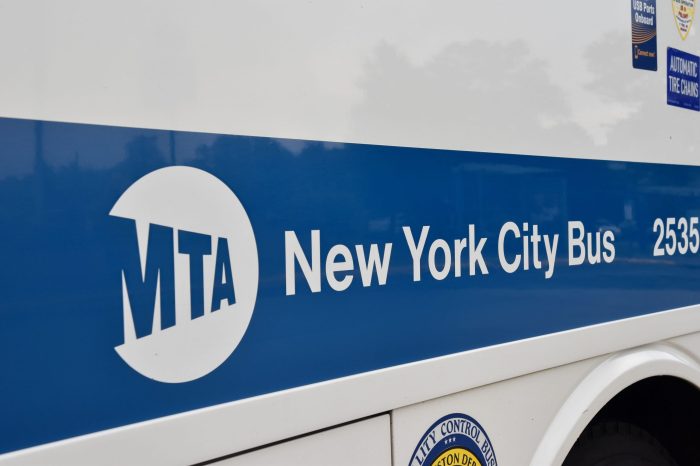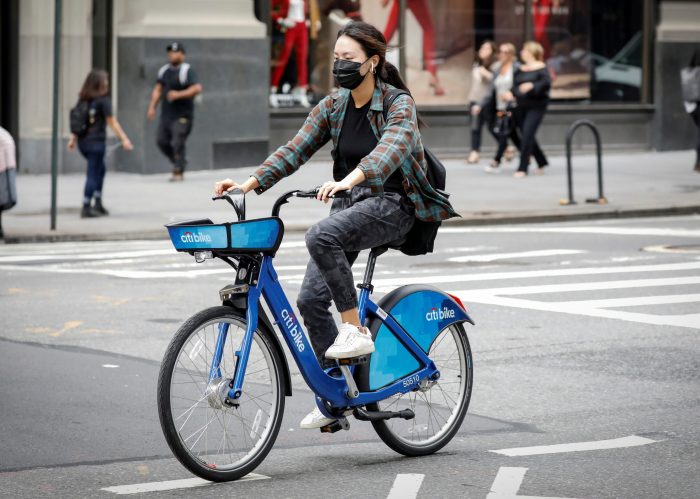More than half of all New York City adults have received at least one dose of the COVID-19 vaccine, but the latest figures from the city’s Health Department shows significant gaps in where people are getting the shots.
Whether its due to a lack of availability or vaccine hesitancy among many of its residents, plenty of pockets of New York City are seeing vaccination rates far below the citywide totals of 51% with at least one dose and 43% who are deemed fully vaccinated. (To be fully vaccinated, you need to have received either the one-and-done Johnson & Johnson COVID-19 vaccine, or both doses of the two-shot Pfizer or Moderna vaccines.)
Some of the neighborhoods with the lowest vaccination rates in the city had spikes in COVID-19 cases not too long ago. That includes Tottenville (ZIP code 10307), a neighborhood on the southwestern tip of Staten Island, which just a few weeks ago ranked among the New York City areas with the highest 7-day COVID-19 positivity rates in the five boroughs.
As of May 31, according to the NYC Department of Health and Mental Hygiene, just over a third of Tottenville’s adults (33.66%) are considered fully vaccinated, while 38.89% of its adult population had at least one vaccine dose.
Another former COVID-19 hot spot — Flatlands/Midwood, Brooklyn (ZIP code 11210) — has the borough’s lowest vaccination rates, with 27.45% of its adults fully vaccinated and 33.13% getting at least one dose.
Edgemere/Far Rockaway (ZIP code 11691) not only has Queens’ lowest vaccination rates, but also the lowest percentages in the entire city. Just 24.49% of the area’s adult population are fully vaccinated, with 31% of residents getting at least one dose.
The city’s also struggling to get the COVID-19 vaccine into the arms of residents in Central Harlem/Washington Heights in Upper Manhattan (ZIP code 10039), where 37.21% of adults got at least one dose and 30.74% are fully vaccinated; and Hunts Point, Bronx (ZIP code 10417), where 34.43% of adults had a dose and 27.31% are now fully vaccinated.
On the flip side, the five neighborhoods leading their respective boroughs in COVID-19 vaccination are the following:
- Bronx — Fieldston/North Riverdale/Riverdale (ZIP code 10471), 64.83% with at least one dose, 56.97% fully vaccinated.
- Brooklyn — Brooklyn Heights/DUMBO/Downtown Brooklyn (11201), 72.03% with at least one dose, 63.44% fully vaccinated.
- Manhattan — Financial District (10004), 100% with at least one dose, 86.87% fully vaccinated.
- Queens — Flushing/Murray Hill/Queensboro Hill (11355), 81.17% with at least one dose, 66.27% fully vaccinated.
- Staten Island — Lighthouse/Midland Beach/New Dorp/Oakland (10306), 52.36% with at least one dose, 45.62% fully vaccinated.
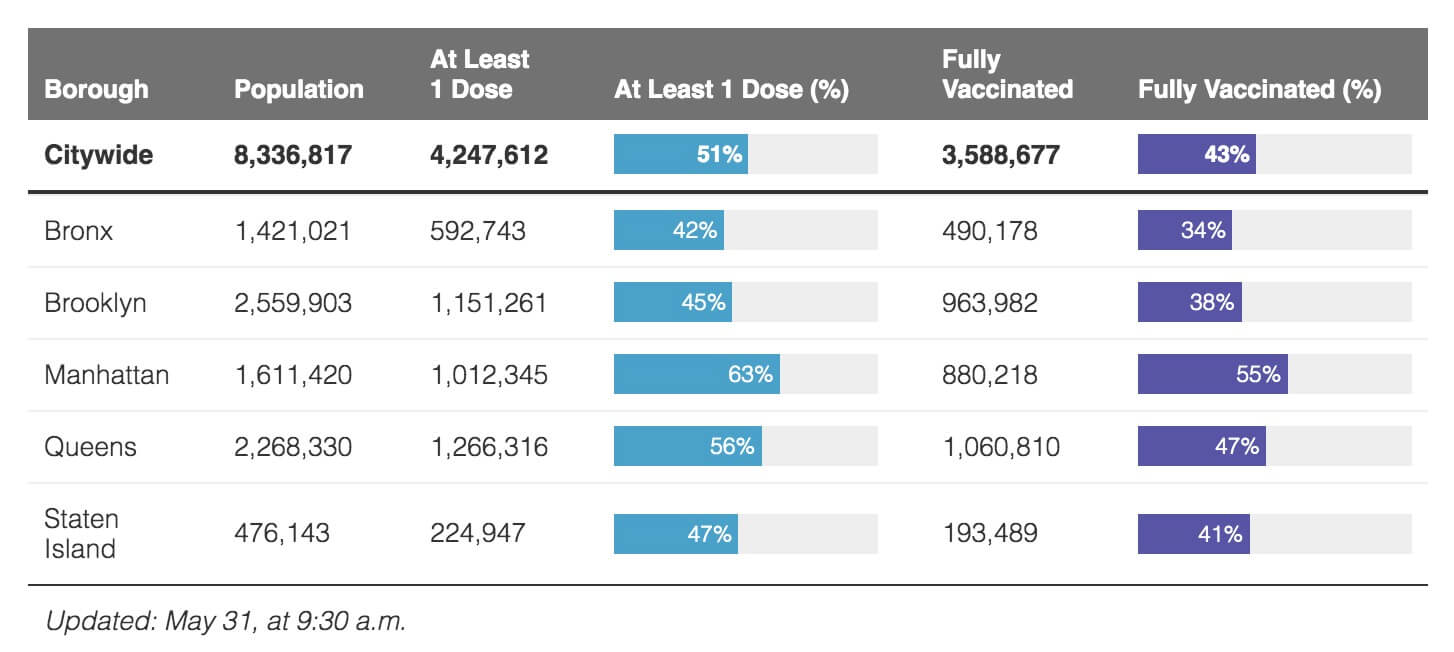
As for the spread of COVID-19 across New York City, the downward trend continues, as just five neighborhoods registered a 7-day positivity rate above 2% for the week between May 21-27.
Queens Village (ZIP code 11429) led the entire city with a 2.49% positivity rate and 20 new cases reported during the period, followed by Fieldston/North Riverdale/Riverdale, Bronx (2.30% 7-day positivity, 15 new cases); East New York, Brooklyn (ZIP code 11239, 2.3% 7-day positivity, 10 new cases); Breezy Point, Queens (ZIP 11697, 2.13% positivity, 3 new cases) and Lighthouse/Midland Beach/New Dorp/Oakland, Staten Island (2.07% positivity, 36 new cases).
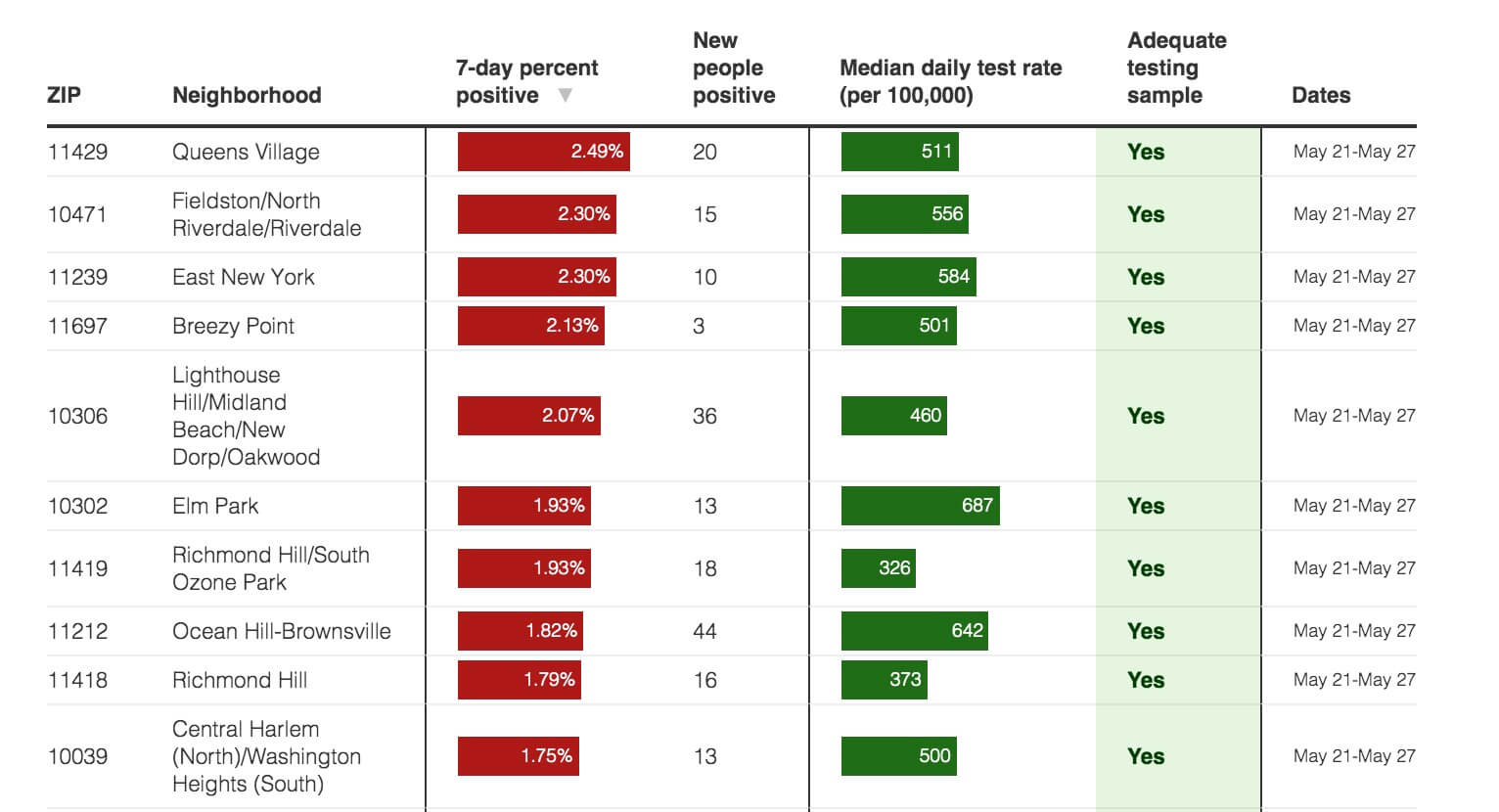
In terms of total number of new COVID-19 cases, Ocean Hill/Brownsville, Brooklyn (11212), which led the city in new cases the previous week, continued to see the highest number of new infections in the five boroughs. Forty-four new COVID-19 cases were reported there between May 21-27, though the area’s positivity rate fell to 1.82%.
It was the only area of New York City with more than 40 COVID-19 cases last week. Three areas had more than 30: Corona/North Corona, Queens (11368, 37 cases, 1.24% positivity); the aforementioned Lighthouse/Midland Beach/New Dorp/Oakland areas of Staten Island; and Annadale/Rossville, Staten Island (10312, 32 cases, 1.67% positivity).
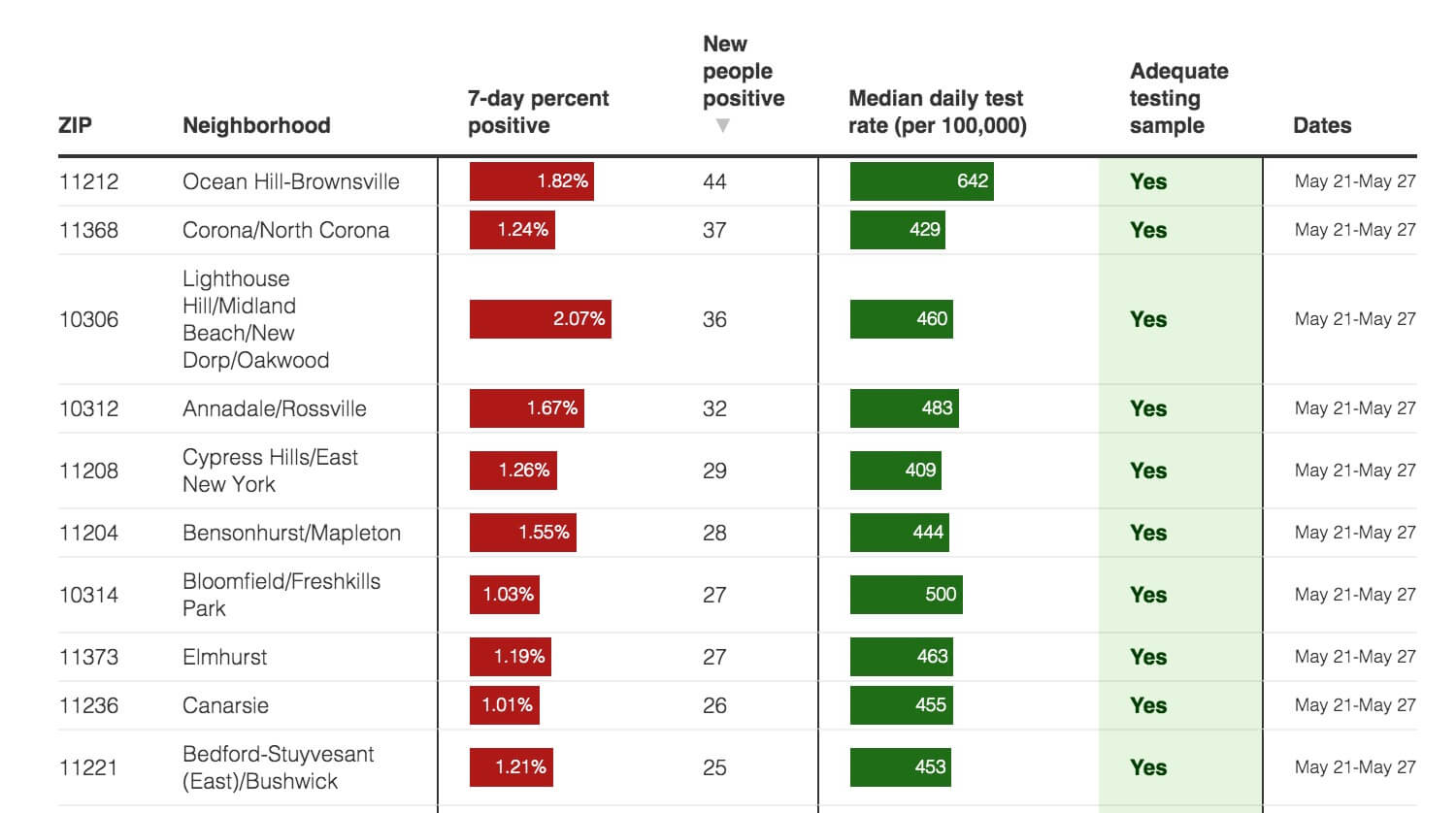
Overall, the city’s 7-day positivity rate fell on May 31 to 0.86%, according to Mayor Bill de Blasio, with just 277 new cases reported citywide and another 68 people hospitalized with the illness.



